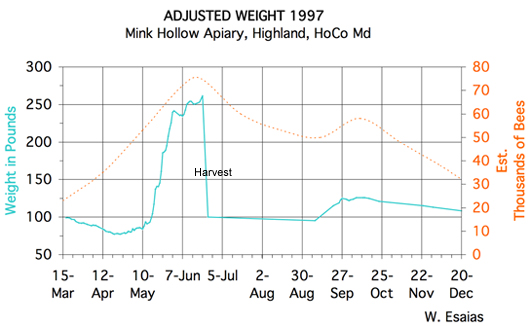The daily measurement of hive weight provides useful insight into the condition and activities of the honey bee colony, the timing of the honey bee nectar flow (HBNF), and the interaction of the bees with their environment.
A scale hive record will give the beekeeper valuable information on the current status of the colony, when the nectar flow is on, and when it is over. Collection of such records is a very useful educational exercise for the beekeeper and for local clubs and associations
The classic hive scale is the traditional manual platform “feed scale” with a deck about 17 x 24 inches, with a total capacity of 500 to 1000 lbs, and a minimum weight sensitivity of 0.25 lbs. The precision and relative accuracy of these beam scales is maintained by sliding a weight along the beam.
. The principle of the operation (lever arm or beam balance) is robust, relatively insensitive to temperature, operates well regardless of rust and exposure to the elements.
Advantages of Using Scale Hives
The scale record is a direct record of plant-pollinator interaction. Honey bee sampling of nectar flows can be ideal for studying linkages between pollinator-climate/ecosystem.
Daily recording of hive weight shows when the bees collect nectar. Timing differs significantly with geography, flora.

The data collected from scale hives in Maryland indicate that over the last 15 years or so of data collection, the nectar flows are occuring earlier, averaging about a half a day a year
To help track and monitor these changes, we are proposing a Honey Bee Climate Network made up of volunteers monitoring of honey bee nectar flows & plant phenology via the Internet. Over time, we can help top preserve records for long-term archiving, and expand the network to include more users/contributors and to include satellite data to establish links to the timing of nectar flow. |